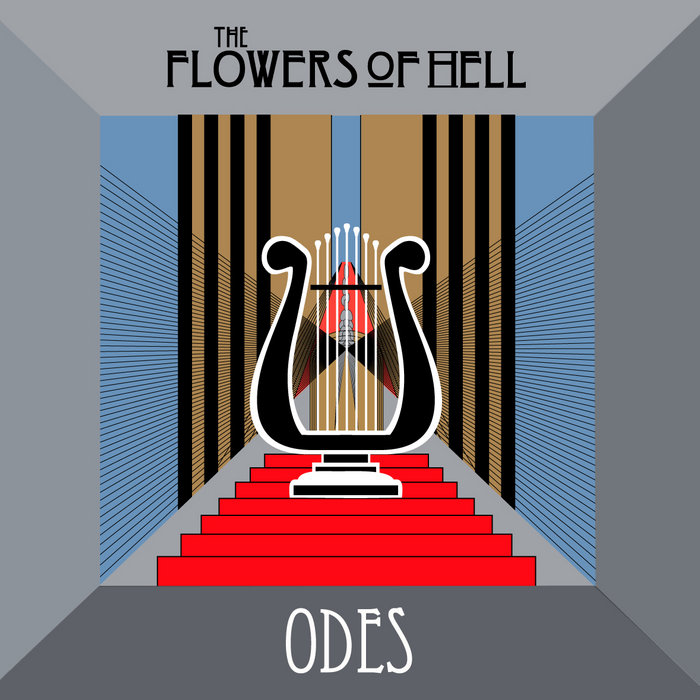
Walk On The Wild Side (with Lou Reed's demo lyrics) – Flowers Of Hell
this blog is GROOVY – check out great Soul, Funk, Jazz, Hip Hop, Bass, Breaks , Reggae, House n many more TUNES
Orchestral pop, often known as “orch pop” in the cool circles, is that magical blend where classical music meets the vibe of popular tunes. Imagine a sunny afternoon with lush strings and playful brass — that’s orch pop for you! Let’s dive into its history and sprinkle in some quirky facts about the artists who made this genre sing.
The roots of orchestral pop can be traced back to the late 1950s and early 1960s. Picture this: rock ‘n’ roll was on fire with Elvis shaking his hips, but there was also a craving for something deeper, more lush. Enter Nelson Riddle and Henry Mancini, two maestros whose arrangements brought an elegant twist to popular songs.
Riddle infused orchestration into Frank Sinatra’s hits like “I’ve Got You Under My Skin,” while Mancini gave us iconic scores like “Moon River.” Their work laid down the foundation for what would soon blow up into orch pop.
As we grooved through the ’60s, another flavor began bubbling up: baroque pop! This subgenre mixed rock elements with classical influences. Artists like The Beach Boys (hello, Pet Sounds!) and The Zombies were mixing catchy melodies with elaborate arrangements. They took inspiration from Bach but kept it fresh enough to dance to — now that’s talent!
Did you know Brian Wilson recorded Pet Sounds in a house he rented? He even built a sandbox to create sound effects! Talk about getting creative!
Fast forward to the 1970s when orch pop hit its stride! Artists like ELO (Electric Light Orchestra) emerged — blending electric guitars with strings straight outta your grandma’s mixtape collection. Their hit “Mr. Blue Sky” still resonates today; it literally sounds like sunshine wrapped up in musical notes.
Around this time, we also saw artist-composers such as Paul McCartney, whose album McCartney II featured glistening arrangements paired with heartfelt lyrics in tracks like “Coming Up.”
Speaking of Paul McCartney… rumor has it he once tried teaching a goat how to play bass guitar because he thought it’d make a great bandmate! Unfortunately, Betty (the goat) preferred chewing on sheet music instead.
In the 1980s and ’90s, orchestral bombast continued evolving thanks to bands like The Divine Comedy and artists such as David Bowie, who sprinkled his glam vibes over orchestra-inspired tunes. Songs blended theatricality with sophisticated orchestrations — think grand performances mixed with dapper suits!
Then came alternative acts using orbs (yes orbs!) instead of traditional instruments; enter indie darlings such as Beirut. This band introduced gypsy-inspired string sounds along with their indie spirit – talk about being hipster before it was cool!
One funny story involves singer-songwriter Sufjan Stevens preparing for an orchestra performance by practicing on…a kazoo! His friends couldn’t stop laughing until they realized he nailed those high notes better than anyone else without losing that sweet kazoo twang!
Now let’s fast-forward again – welcome to today’s scene where orch pop is having quite the renaissance! Artists fusing genres are everywhere you look—like Adele rocking ballads layered over rich orchestrations or Florence + The Machine conjuring epic symphonic magic.
Contemporary groups such as of Montreal take platters filled from past decades while serving them fresh alongside vibrant visuals and whimsical themes that’d tickle any fancy.
Also notable are film soundtracks contributing massively—the genius composers Hans Zimmer or John Williams weave intricate layers elevating stories beyond screens straight into hearts worldwide.
And let’s not forget legends always have their quirks—Danny Elfman originally showed up at auditions dressed up as a clown…and got hired anyway because who wouldn’t want someone quite eccentric penning movie scores?
Orchestral pop remains ever-evolving—a delightful blend reflecting creativity lost within mundane noise dominating charts nowadays—with fascinations drawing from classic muses while allowing new freedoms too bold for past generations’ imaginations yet reverberating warm fuzzies all around us = pure joy!!!
So next time you’re bopping along listening to your favorite orch-pop track remember these stories full of laughs behind every chord played—and maybe see if you can teach your pet something funky too—it might just surprise ya!

Walk On The Wild Side (with Lou Reed's demo lyrics) – Flowers Of Hell